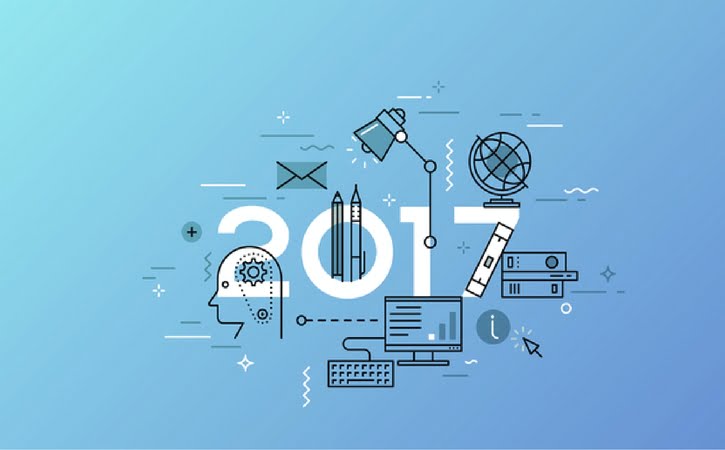With the close of 2016 behind us, we are facing a fresh, brand-new year and all of its possibilities. This season often has us wondering, discussing, and working toward what’s ahead. We put our heads together for a TIBCO think tank and compiled this lis of predictions for 2017. Here are our tech thoughts for the new year.
Companies who have been wise to invest in collection and storage of data will be able to reap the benefits of sharing their data not only internally but with their external business ecosystem. For the retail industry, examples include suppliers sharing supply chain and performance data with retailers. Business value is significant as it can either be positioned as a data monetization opportunity creating a new revenue stream, or it can be positioned as a retailer-supplier collaboration tool which will help increase market share and profitability, resulting from a joint understanding of the market and the consumer and making room for win-win decisions on promotion, assortment, and distribution. The competitive advantage is for those who understand the value of this type of data democracy and have found flexible, intuitive, and secure tools for sharing their data and insights – Heleen Snelting
Unicorns are magical, mythical, and rare, but are increasingly the most important people in your organization. This year, people who excel across four areas: knowledge and application of technology, keen business strategy acumen, analytic prowess, and organizational influence will rise in their leadership roles and increasingly set the agenda in the digital enterprise. Digital transformation requires broader skills than prior generations of employees who could narrowly focus on particular areas of expertise. Today, digital leaders must base their decision making on sound business economics and knowledge of customer experiences. Once that foundation has been built and as it continuously evolves, they must be able to apply the right digital technologies to address those challenges. As data proliferates—in both historic and continuously streaming forms—digital leaders must use their analytic skills to interpret and apply those insights to decisions. Finally, digital transformation leaders need to consolidate strategies, technology, and analytics into a coherent story that is rational and compelling in order to deliver meaningful change to their organizations. – David Rosen
With the IoT making strides on its way to reality, we are quickly evolving from a fixed environment of legacy IT systems and applications that have enabled the first wave of consumer automation. A new wave of intelligent devices is being deployed in applications on which our daily lives are increasingly dependent. Everything will be connected and smart: public and private vehicles and the infrastructure used to get from A to B, homes and utilities, retail, advertising, etc.
Looking at the interconnection of IoT, big data, and analytics, as shown in the illustration below by Frost & Sullivan, the end-game for businesses is a revenue machine, collecting and monetizing consumer data while running analytics and refining machine learning algorithms that are predicting situational behavior and future actions of people. While the benefits of these trends are obvious, including machine learning algorithms to prolong the lifespan of resources, infrastructure, and devices as well as making consumers lives more comfortable, the exponential growth of IoT also creates serious discussions about privacy and data security – Erich Gerber

Embedded BI will go from being a niche product used by software companies to a mainstream product sold to all companies. Why? Because we all now work for software companies. You work for a bank? An insurance company? Wrong. You work for a digital service provider and digital service providers are the new term for software companies. This is the year when software companies complete their move from “making products” to “providing services” via SaaS. Instead of products, software makers are tasked with creating experiences where the customer is in charge. And the #1 demand of users? Data. Without analytics and BI embedded into the applications these new digital services will flat line.
part software engineers and part operations—got absolutely no notice in the past. You don’t care about DevOps? That’s like saying a brewmaster’s job is useless in a brewery. They take hops and turn it into delicious beer. DevOps take code and turns into valuable digital experiences. As per the other predictions—digital experiences are what every company sells which means excellence in DevOps gives agility and excellence in the products you sell. When a customer wants a new feature, like better analytics, and you can’t provide it quickly, you’ve lost a customer. This year someone will realize that there is a buyer for that unused data you’re sitting on. Asphalt is a by-product of refining oil to gasoline just like valuable data is a by-product of your digital services. To monetize the data, embedded BI is key along with good API management.” —Ernesto Ongaro
Data wrangling is the new “pretty dashboards”. Now that analysts can comfortably take visualizations for granted, they can tackle the next big problem… wrangling their data so that it can be better analyzed. Vendors will be pushing their angles as to how people can wrangle their data most efficiently. Some will argue that you should have a separate tool, while others will say that it should be a part of the analysis process. It will be interesting to see which people like better. Questions will get harder. Gone are the days when a simple bar chart that breaks out the “sum of sales by store” is good enough. Customers are moving from “descriptive”, toward “diagnostic” analytics. They’re asking not just what, but why. That means a greater requirement for correlation, clustering, regression, and other types of modeling. Whoever brings that functionality to the masses will have a huge win on their hands.” —Tim Alexander
Check back in at the close of 2017 to see if we were right!
References : www.tibco.com



























